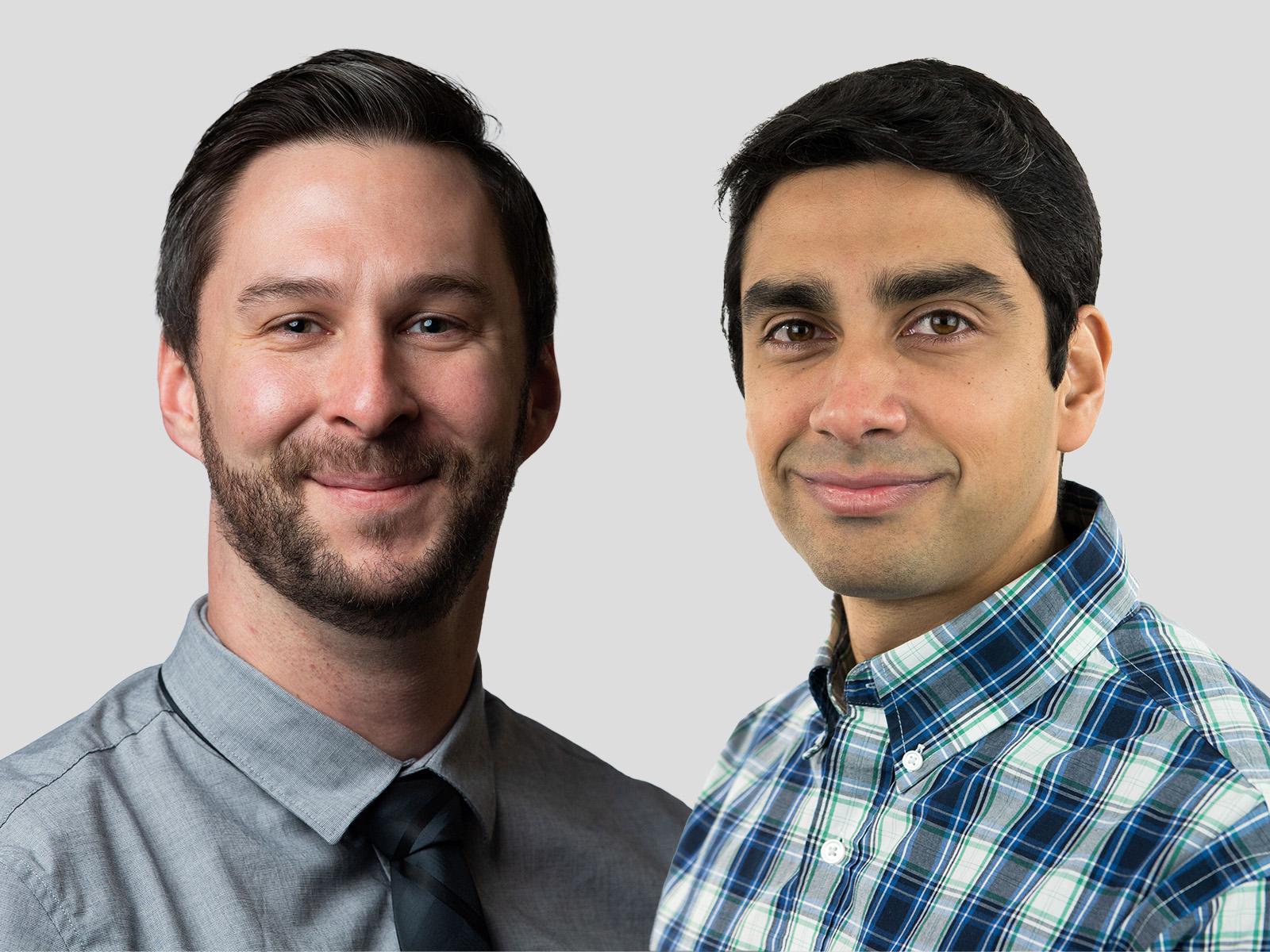Tracking Cosmic Rays with Radioactivity
Saldanha will lead a new project to validate models of cosmic ray exposure

Richard Saldanha and Aaron Hellinger will lead a new project using data to benefit nuclear science.
(Photo by Andrea Starr | Pacific Northwest National Laboratory)
What is the origin of matter? How did the universe evolve? These are examples of fundamental questions about the universe that remain unanswered. In their quest for answers, physicists have designed experiments to detect rare events, such as neutrinoless double beta decay, that may hold clues to the universe’s origin.
To distinguish such events, detectors need to be ultra-sensitive. As detector sensitivity increases, so too does the need to reduce background noise from radioactivity. This is where Pacific Northwest National Laboratory (PNNL) Physicist Richard Saldanha excels. His project, “Benchmarking and validating cosmogenic activation models”, was recently awarded funding from the Department of Energy, Nuclear Physics program.
Through this project, Saldanha and his team—along with collaborators from Los Alamos National Laboratory—will study how cosmic rays affect detector materials.
“Earth is constantly being bombarded with high-energy particles from space,” said Saldanha. “These cosmic rays can interact with materials on the Earth’s surface, creating radioactive atoms in otherwise stable material. Scientists build laboratories underground to shield detectors from these particles during experiments, but detector components can still be exposed to cosmic rays during fabrication, storage, and shipping prior to reaching these laboratories. Unfortunately, very little data exists on this type of exposure, so we can’t predict how this exposure may affect the outcome of experiments.”
Aaron Hellinger is a postdoctoral researcher at PNNL who used the little data that was available to develop a computational code to predict the amount of radioactivity generated based on existing measurements and models of cosmic ray particle flux. Through their newly-funded project, Saldanha and Hellinger plan to benchmark and validate the existing models with experimental data.
“The amount of radiation a material gets exposed to depends on a lot of factors—parameters like altitude, latitude, longitude, and length of exposure can all contribute,” said Saldanha. “With our code, we can make a careful selection of materials and activation reactions that are ideal for benchmarking the model. We will then expose the materials to cosmic rays during typical transportation scenarios—keeping careful track of these parameters—and measure their subsequent radiation levels to validate the model.”
Collaborators at Los Alamos National Laboratory will add to these measurements using their Irradiation of Chips Electronics House neutron beam at the Los Alamos Neutron Science Center—a beam with an energy spectrum very similar to that of cosmic ray neutrons.
“Ultimately, we want to create a validated, publicly-available software that will enable researchers to calculate the potential cosmic ray exposure of their detectors,” said Saldanha. “We believe that this will be an important tool for a wide range of experiments.”
Published: October 10, 2023